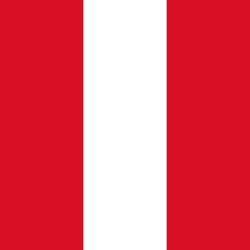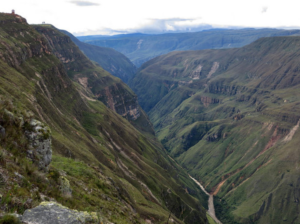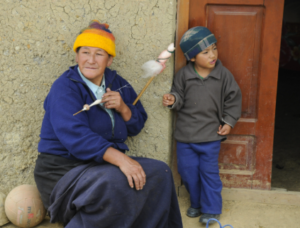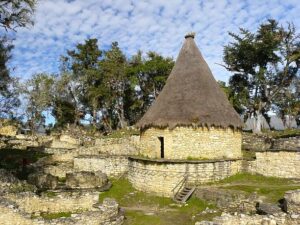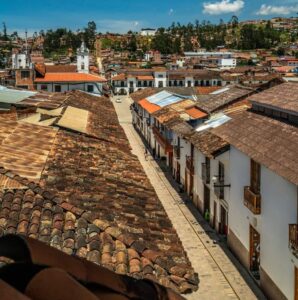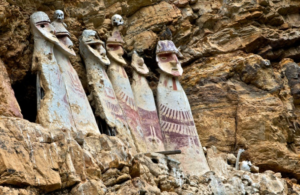About Peru
The narrow desert belt of Peru’s Pacific coastline stretches the length of the country and harbors fishing villages, beautiful beaches, agricultural lands, and Peru’s major towns and cities. The amazing Andes Mountains separate the arid coastline from the lush Amazon Basin. The ecologically rich tropical rain forests of the Amazon encompass some of the world’s most remote and least explored areas. The Amazon Basin is also home to millions of indigenous highland people, who speak the ancient Inca language of Quechua, and live in traditional villages with steeply terraced agricultural fields and wandering herds of llamas and alpacas.
Peru’s largest city and capital is Lima. Lima is the fourth largest city in the Americas. The majority of ISL volunteers first arrive in this city before traveling to another destination, such as Chachapoyas, to serve in developing areas. In this city, volunteers attend seminars on common diseases and tropical medicine, take vital signs, perform physical examinations and public health surveys, and learn some medical Spanish.
Peru has a good health care system for public and private sector employees and self-employed people who directly contribute to the economy. There is also some health care available for others, but the system is overwhelmed with the needs of so many. The unemployment rate is very high and there is a large population of immigrants from different provinces of Peru who are also struggling with poverty. ISL serves in these communities.
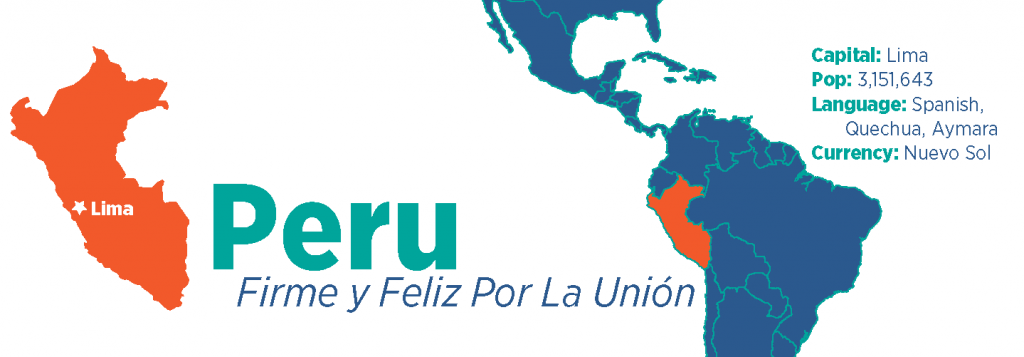
Where We Serve in Peru
ISL Peru volunteers are likely to spend the majority of their time in Chachapoyas City; after arriving at the Lima airport, they will take a 1.5-hour flight from Lima to Chachapoyas, where they will engage in community work.
The town of Chachapoyas is situated in northern Peru’s Amazon region, which is located between the Amazon rainforest and the Andes. Known for its rich cultural heritage, especially that of the ancient Chachapoya civilization, whose ruins and artifacts can still be seen in the region, it is also the capital of the Amazonas Region.
Because of the region’s clouds, the name “Chachapoyas” means “cloud forest” in Quechua.
ISL volunteer can visit the Chachapoyas region working in different communities such as Pedro Castro, San Geronimo, Huancas, Taquia and Levanto providing health clinic attention and house visits in areas where poverty has significantly impacted the Chachapoyas region, particularly among the local Quechua-speaking population.
The Need in Peru
In the districts surrounding Chachapoyas, Peru, poverty can be reduced by emphasizing infrastructure development, community empowerment, and economic opportunities. Enhancing access to resources like clean water, bolstering local economies, and assisting with healthcare and education programs are some of the specific areas of attention.
Here are some examples of what is needed in Chachapoyas City’s poorest areas:
- Access to healthcare and educational opportunities
- Enhance the quality of water systems and address environmental problems such as solid waste, air pollution, and water contamination.
- Excessive fertilizer uses and unsustainable farming practices.
- Other similar cases
Our Partnerships in Peru
As with any great work, it takes great relationships to get the job done well. That’s why ISL Peru is excited to partner with nonprofits, NGOs, governmental and religious institutions to better serve the people of Peru.
Children’s Home and Elementary Schools
Institución Educativa 18006 Pedro Castro Alva
Escuela 18040 – Huancas
Centro Especial PRITE David Chachapoyas
Community spaces
Local comunal de Pedro Castro
Local comunal de Huancas
Local comunal de San Geronimo
Local comunal del Señor de los Milagros
Local comunal 16 de Octubre
Hospitals and Health Centers
Posta Medica de Pedro Castro
Nursing Home
Asilo Virgen de Asunta
University
Escuela Profesional de Ingeniería Forestal (Professional Forest Engineering School)
Escuela Profesional de Medicina Humana (Professional School of Human Medicine)
Universidad Nacional Toribio Rodriguez de Mendoza (UNTRM)
Agriculture Farm
Fundo el Buen Amigo
Fundo Ponaya
Women’s Group
Group of Huancas Women Potters
What to Expect as a Volunteer
With your service program, you’ll arrive in Peru via the International Airport of Lima, which is Peru’s main airport, located seven (7) miles from the historic center of Lima. After going through customs and retrieving your luggage, you will be met by one of our ISL staff members holding an ISL sign. You will be then transported in a van or bus (arranged and paid for by ISL) approximately 40 minutes to your first hotel or housing location. Depending on the program you have selected, volunteers go from Lima to another city such as Chachapoyas to begin clinic days and house visits in the areas.
Cultural Exploration
Dance Classes
From salsa to Chumaychada, this is an excellent opportunity to learn the basics of local dances.
City Tours
Walk around the city, exploring parks, old colonial style buildings, theaters, museums, etc.
Museums and Churches
We can visit churches and museums located around the city. Prices vary by season, with some being free.
Medical Plant Farms
Learn about different kinds of medicinal herbs.
Archeological Sites
There are variety of archeological sites Higos Hurco, Huanca Urco, Sonche to visit around the city. Tour prices depend on the season. $5 to $10
Recreation
Kuelap Fortress
Kuelap, one of the largest ancient monuments of the Americas, was a fortified citadel in northern Peru on the slopes of the Andes. Kuelap Fortress is currently a UNESCO World Heritage Site candidate. To reach the Kuelap cable car station, the first step is to drive 1 or 1.5 hours from Chachapoyas to town Tingo. The Kuelap cable car is about 20 minutes each way to get at the fortress. After landing of the cable car, the uphill hike to the fortress of Kuelap takes about 30 min, ascending 3,940 feet (1,200 m).
Entry fee: $15 USD per person
Quiocta Cavern and Sarcophagi of Karajia
Departure from the city of Chachapoyas in the morning towards the city of Lamud. We head to the parking lot of the Quiocta cavern, a five-minute walk to begin our visit to the Quiocta cavern of approximately one and a half hours, then we return to the city of Lamud for lunch. After lunch we will continue our trip by vehicle for approximately one hour to the community of Cruz Pata. We begin our 40-minute walk down, visit the group of Sarcophagi of Karajia then return to our vehicle. We will arrive at the hotel in the late afternoon.
Entry fee: $15 USD per person
Celebration of Raymillacta
ISL Volunteers can enjoy this celebration the first week of june, where the city of Chachapoyas indulge in a celebration of the region’s culture, that includes dances, cuisine, music, costumes and artwork. The Andean Highlands & Amazonia are both represented at Raymi Llacta. Known as Raymi Llacta (or Llaqta), which means “highland town festival” in Quechua, it has been a fixture on the Northern Peru calendar since 1996. The festival attracts participants from the city’s various districts, as well as the surrounding provinces, and has a vibrant mix of pre-Inca, Inca and Colonial traditions, with representatives of Amazonas’ highland farming communities, mingling with jungle-dwelling, indigenous communities.
Free activity

 Lodging
Lodging
We make arrangements for ISL volunteers to stay in a comfortable hotel in Lima on the days that they arrive and depart. The ISL volunteers fly to Chachapoyas the day after they arrive and are accommodated in a hotel or guest house there. The accommodations are clean, safe, and conveniently located near service locations and
recreational areas. Among the amenities and services that hotels can provide volunteers are: room service, 24-hour reception, hot water, a breakfast buffet, Wi-Fi, a bed of their own, convenient access to restrooms and showers, and meeting areas for training and fellowship.
Many ISL accommodations are unique and may include hotels, retreat houses, guest houses or home stays, all of which provide a distinctive cultural experience. ISL Country Coordinators will provide a description of your lodging in the Final Trip Document, posted to your My ISL Portal prior to your departure.
Accommodations in Lima city:
Casa Lima Kolping Hotel
Tomas Ramsey 1005, Magdalena del Mar, Lima, Perú
https://casa-kolping.limaperuhotels.net/es/
(1 hour from airport)
Golden Tower Hotel
Av. Universitaria 883, San Miguel, Lima – Perú
https://www.goldentowerhotel.com/
(45 min from airport)
Accommodations in Chachapoyas city:
Puma Urco Hotel
Jirón Amazonas N° 833 – Chachapoyas – Amazonas – Perú
https://www.centraldereservas.com/hoteles/peru/amazonas/chachapoyas/hotel-puma-urco
(15 min from airport)
Villa de Paris Hotel
Jirón Dos de Mayo Cuadra 15 – Chachapoyas – Amazonas
https://www.hotelvilladeparis.com/
(20 min from airport)
La Ensenada Hotel Chachapoyas
Fundo Santa Isabel S/N, Chachapoyas – Amazonas
https://www.laensenadahoteles.com/laensenadahotelchachapoyas/index.html
(30 min from airport)
Country Coordinator: Sandra Diaz Ruiz
Where is she from? Where has she lived?
Sandra grew up in the Peruvian Amazonian region of Chachapoyas. She lives in the northern Peruvian town of Chachapoyas, which is the capital of the Amazon region. It is situated between the rainforest and the Andes, deep within a tropical cloud forest. From Quechua, the term “Chachapoyas” means “cloud forest”
What does she love most about her country?
She adores her country’s welcoming people and diverse cuisine, including ceviche, which is Peru’s main dish. Her favorite place to live is Chachapoyas, a peaceful, charming town with a charming historical center, several beautiful churches, and houses from the 19th century with balconies. The city is mostly popular as a starting point for exploring the spectacular natural, archaeological, and cultural landmarks in the area. The pre-Inca Chachapoya, often known as the “cloud people” lived in the immense and mostly desolate cloud forests and Andean highlands of Chachapoyas. Their history is still mostly unknown, and there are hundreds of lost cities and cliff tombs containing new discovered mummified warriors.
What is her family like?
Sandra, the youngest of three sisters and two brothers, comes from a large family of five. Jorge “Coco” as he is known by his nickname, is her husband and life partner. She also has a Golden Retriever puppy that she takes everywhere with her, Aslan is her best friend. Her mother lives in Chiclayo with her sister Lily, who is quite unwell; she hopes that her sister will get better eventually. Supporting her mother and sister Lily is important for Sandra and her family because they deserve to live happy and healthy lives.
Where did she grow up? What was her childhood like?
She grew up in Chachapoyas, where she was born. She loved to played neighborhood games like Mundo (world), Salta Soga (rope jumper), and Trompo (spinning top) with her cousins and friends for the majority of her early years. Sandra finished her kindergarten education in Chachapoyas. After that, she and her family move to Lima because of her parents’ financial situation and in an effort to provide her siblings with better educational options. She returned to Chachapoyas high school after attending for over nine years. Once more, she spent her high school years with her cousins and friends.
What was the most impactful moment for her during her education?
The most impact moment for her during her education it was developing projects to close municipal solid waste whose operations damage the environment, contaminate water supplies, destroy aquifer habitat, and spread disease among the populace. Perhaps in the future, she will help for the ISL’s ecological service-learning program, which promotes sustainable development through agricultural, community, and environmental projects.
What has she worked in besides being a Country Coordinator?
She has been working on establishing environmental management accordance with international standards organizations. She established in place a variety of regulations in companies to improve their operations, make them more environmentally friendly, and stop occupational health hazards for workers. In addition, she worked as a freelancer for companies that required environmental management, occupational health, and quality management programs.
At what point did she realize what her calling was?
When Sandra experienced traveling with volunteers to the most rural parts of her country, she recognized that helping with health care and environmental projects was her calling. This career was enhanced when she started working on environmental protection projects. She had the chance to learn about the basic needs of her
community, such as the quality of the water and the lack of health in the poorest locations. Her current career and passion is researching new initiatives that can support the ecosystem’s sustainability and, as a result, benefit the people in her town and country through small changes and humanitarian initiatives.
What was her path to becoming an ISL Country Coordinator?
After graduating as an Agroindustrial Engineer in 2009, Sandra met Sonia Hernández, the ISL Country Coordinator in Costa Rica, who encouraged her to start the ISL program in Peru. One of the most challenging events in her life was the first time she helped a group of volunteers in the Peruvian jungle in Iquitos city, and she will never forget it due to the new experience she had, the cultural exchange with volunteers, and the many other public health lessons she learned.
How long has she been working with ISL?
Sandra worked as the Country Coordinator for ISL in Peru from 2010 until 2016, after taking a break off to continue her environmental engineering career. She feels happy to be back with the ISL family for this incredible work.
A brief summary of what she does as a Country Coordinator:
Sandra facilitates the coordination of all logistics for teams visiting Peru. When a team is marked as a “Go” in the database, her job is to make sure she has hired the right people for them, knows where they will work, which doctor they will work with, what they will do for recreational day, and makes sure they have lodging, food, transportation, and medical supplies. She is also in charge of inventory and prepares the Peru program’s budget. She is also in charge of staff training; if there are problems when the reports are sent in, she arranges training sessions that she leads personally and occasionally requires the help of other resources. She is also in charge of keeping an eye on how teams are working. She does spot checks to observe how things are going in the field and on occasion collaborates with them to gain insight into the team leader’s leadership style.
What inspires her most about what she does?
Her greatest reasons for inspiration at work are her love of helping people, the chance to interact culturally with those in need, and the volunteer service-learning opportunities. Motivating aspects include the opportunity to learn and grow, as well as the opportunity to work in an environment that encourages a culture of development.
Peru's Staff
We love our staff and we are positive that you will too! Each staff member is professional, courteous, and has the same passion as you do: to serve others.

